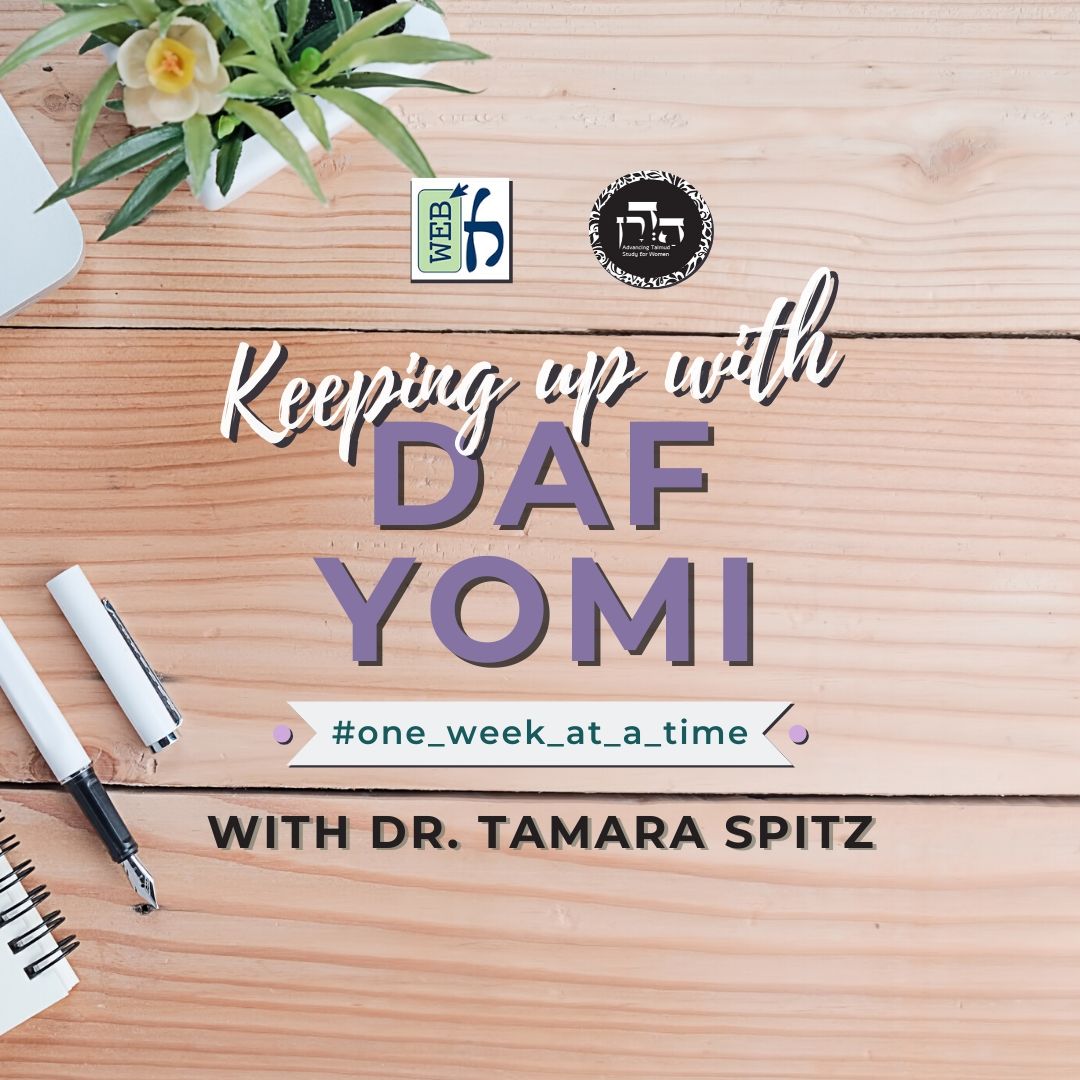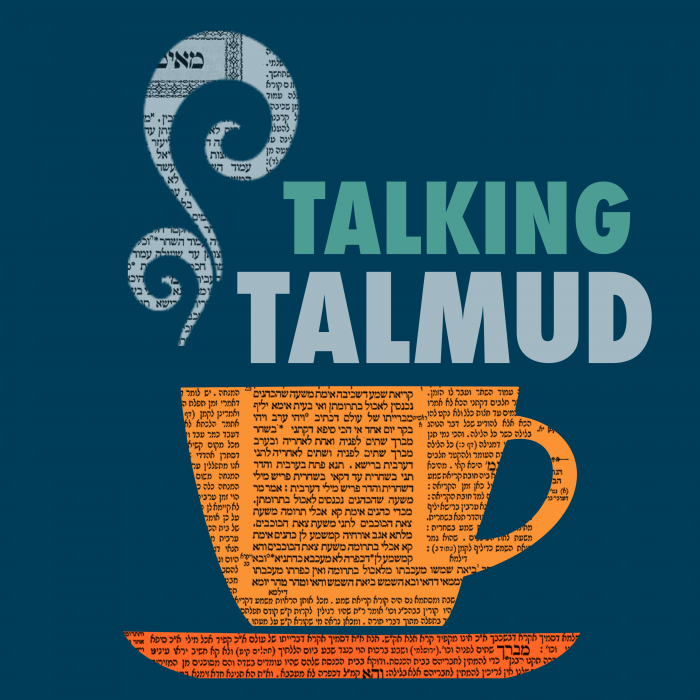Bava Kamma 77
פָּרָה – מְטַמֵּא טוּמְאַת אוֹכָלִין, הוֹאִיל וְהָיְתָה לָהּ שְׁעַת הַכּוֹשֶׁר.
The meat of the red heifer is susceptible to contracting ritual impurity of food, despite the fact that it is prohibited to derive benefit from such meat, since it had a time when it was fit for consumption.
וְאָמַר רֵישׁ לָקִישׁ, אוֹמֵר הָיָה רַבִּי שִׁמְעוֹן: פָּרָה נִפְדֵּית עַל גַּבֵּי מַעֲרַכְתָּהּ. אַלְמָא כׇּל הָעוֹמֵד לִפְדּוֹת – כְּפָדוּי דָּמֵי.
And Reish Lakish says, in explanation of Rabbi Shimon’s statement: Rabbi Shimon would say that the red heifer can be redeemed with money even when it has already been slaughtered upon its pyre, i.e., for the sake of purification. For this reason Rabbi Shimon claimed that the meat had a time when it was fit for consumption, as it can be rendered permitted for consumption through redemption. The Gemara states its conclusion: Evidently, Rabbi Shimon holds that any animal that is ready to be redeemed is considered as though it has already been redeemed.
בִּשְׁלָמָא רַבִּי יוֹחָנָן לָא אָמַר כְּרַבִּי שִׁמְעוֹן בֶּן לָקִישׁ – דְּקָא בָּעֵי לְאוֹקֹמַהּ לְמַתְנִיתִין אֲפִילּוּ בִּתְמִימִין. אֶלָּא רֵישׁ לָקִישׁ – מַאי טַעְמָא לָא אָמַר כְּרַבִּי יוֹחָנָן?
The Gemara discusses the relative merits of the answers provided by Rabbi Yoḥanan and Reish Lakish: Granted, Rabbi Yoḥanan did not state an answer in accordance with that of Rabbi Shimon ben Lakish, i.e., Reish Lakish, that the mishna is referring to a blemished animal, because he wants to interpret the mishna as dealing with all kinds of sacrificial animals, even with unblemished ones. But what is the reason that Reish Lakish did not state an answer in accordance with that of Rabbi Yoḥanan?
אָמַר לָךְ: ״וּטְבָחוֹ וּמְכָרוֹ״ – כֹּל הֵיכָא דְּאִיתֵיהּ בִּמְכִירָה אִיתֵיהּ בִּטְבִיחָה, וְכֹל הֵיכָא דְּלֵיתֵיהּ בִּמְכִירָה לֵיתֵיהּ בִּטְבִיחָה. וְהָנֵי קֳדָשִׁים – הוֹאִיל דְּכִי מְזַבֵּין קֳדָשִׁים לָא הָוְיָא מְכִירָה, לֵיתַנְהוּ בִּטְבִיחָה.
Reish Lakish could have said to you that the verse states: “If a man steals an ox or a sheep, and slaughters it or sells it” (Exodus 21:37). This verse compares slaughtering to selling, thereby indicating that anywhere that the fourfold or fivefold payment is applicable for the sale of a particular animal it is likewise applicable for its slaughter, and anywhere that the fourfold or fivefold payment is not applicable for the sale of an animal it is not applicable for its slaughter either. And with regard to this case of sacrificial animals, since when one sells sacrificial animals it is not a valid sale, and no fourfold or fivefold payment is incurred, so too, there is no fourfold or fivefold payment for their slaughter.
וְאָזְדוּ לְטַעְמַיְיהוּ – דְּאִתְּמַר: הַמּוֹכֵר טְרֵיפָה לְדִבְרֵי רַבִּי שִׁמְעוֹן – רַבִּי יוֹחָנָן אָמַר: חַיָּיב, וְרֵישׁ לָקִישׁ אָמַר: פָּטוּר.
And these two Sages follow their own lines of reasoning. As it was stated: According to the statement of Rabbi Shimon that an act of slaughter that is not fit for accomplishing its full ritual purpose is not considered an act of slaughter at all and does not entail liability to pay the fourfold or fivefold payment, in the case of a thief who sells a stolen animal with a wound that will cause it to die within twelve months [tereifa], Rabbi Yoḥanan says: The thief is liable to pay the fourfold or fivefold payment if he sells the animal rather than slaughters it. And Reish Lakish says: He is exempt.
רַבִּי יוֹחָנָן אָמַר חַיָּיב – אַף עַל גַּב דְּלֵיתֵיהּ בִּטְבִיחָה, אִיתֵיהּ בִּמְכִירָה. וְרֵישׁ לָקִישׁ אָמַר פָּטוּר – כֵּיוָן דְּלֵיתֵיהּ בִּטְבִיחָה, לֵיתֵיהּ בִּמְכִירָה.
The Gemara elaborates: Rabbi Yoḥanan says that he is liable, as even though the fourfold or fivefold payment is not applicable for the slaughter of a tereifa according to the opinion of Rabbi Shimon, as its meat may not be eaten, nevertheless, it is applicable for its sale. And Reish Lakish says that the thief is exempt, as, since the fourfold or fivefold payment is not applicable for the slaughter of a tereifa according to Rabbi Shimon, it is not applicable for its sale either.
אֵיתִיבֵיהּ רַבִּי יוֹחָנָן לְרַבִּי שִׁמְעוֹן בֶּן לָקִישׁ: גָּנַב כִּלְאַיִם וּטְבָחָהּ, טְרֵיפָה וּמְכָרָהּ – מְשַׁלֵּם תַּשְׁלוּמֵי אַרְבָּעָה וַחֲמִשָּׁה. מַאי, לָאו רַבִּי שִׁמְעוֹן הִיא? אַלְמָא אַף עַל גַּב דְּלֵיתֵיהּ בִּטְבִיחָה – אִיתֵיהּ בִּמְכִירָה!
Rabbi Yoḥanan raised an objection to the opinion of Rabbi Shimon ben Lakish from the following baraita: If one stole an animal of diverse kinds, e.g., a sheep-goat hybrid, and slaughtered it, or if he stole a tereifa and sold it, he pays the fourfold or fivefold payment. What, is it not correct to say that this baraita, which mentions the case of selling a stolen tereifa but not slaughtering it, is in accordance with the opinion of Rabbi Shimon? Apparently, according to Rabbi Shimon, even though the fourfold or fivefold payment is not applicable for the slaughter of a tereifa, it is nevertheless applicable for its sale.
אֲמַר לֵיהּ: לָא; רַבָּנַן.
Reish Lakish said to Rabbi Yoḥanan in response: No; this baraita is not taught in accordance with the opinion of Rabbi Shimon. Rather, it follows the opinion of the Rabbis, who disagree with Rabbi Shimon and maintain that a thief is liable for the fourfold or fivefold payment for slaughtering an animal even if the act of slaughter does not render its meat fit for consumption, as in the case of a tereifa.
אִי רַבָּנַן, טְרֵיפָה בִּמְכִירָה אִיתַהּ – בִּזְבִיחָה לֵיתַהּ?!
The Gemara asks: If the baraita reflects the opinion of the Rabbis, why does it mention the sale of a tereifa but not its slaughter? According to the opinion of the Rabbis, is the fourfold or fivefold payment applicable for the sale of a tereifa while it is not applicable for its slaughter? This is certainly not the case.
וְאֶלָּא מַאי, רַבִּי שִׁמְעוֹן?! כִּלְאַיִם בִּטְבִיחָה אִיתַהּ, בִּמְכִירָה לֵיתַהּ?!
The Gemara responds with a counter-question: Rather, what would you say, that the baraita reflects the opinion of Rabbi Shimon? The same difficulty could be raised in the case of diverse kinds, as the baraita mentions the animal’s slaughter but not its sale: Is the fourfold or fivefold payment applicable for the slaughter of an animal of diverse kinds, while it is not applicable for its sale? There is certainly no difference between slaughtering and selling in this case.
אֶלָּא תְּנָא טְבִיחָה – וְהוּא הַדִּין לִמְכִירָה; אֵימָא לְרַבָּנַן נָמֵי, תְּנָא מְכִירָה – וְהוּא הַדִּין לִטְבִיחָה.
Rather, one cannot make such inferences from the baraita, as it teaches liability with regard to the slaughter of diverse kinds, and the same is true with regard to its sale. If so, one can say the same for the opinion of the Rabbis as well: The baraita teaches liability with regard to the sale of a tereifa, and the same is true with regard to its slaughter. Once the baraita is interpreted in accordance with the opinion of the Rabbis and not that of Rabbi Shimon, it has no bearing on the dispute between Rabbi Yoḥanan and Reish Lakish.
וְרַבִּי יוֹחָנָן אָמַר לָךְ: הַאי מַאי? אִי אָמְרַתְּ בִּשְׁלָמָא רַבִּי שִׁמְעוֹן, אַיְּידֵי דִּתְנָא טְרֵיפָה בַּחֲדָא – תְּנָא כִּלְאַיִם בַּחֲדָא.
And Rabbi Yoḥanan could say to you: What is this comparison? Granted, if you say that the baraita reflects the opinion of Rabbi Shimon, and that is why it referred specifically to the sale of a tereifa, the baraita can be explained: Since it necessarily taught the case of tereifa in only one manner, that of selling, it maintained the same style of presentation and taught the case of diverse kinds in only one manner, that of slaughtering.
אֶלָּא אִי אָמְרַתְּ רַבָּנַן, נְעָרְבִינְהוּ וְנִיתְנִינְהוּ: גָּנַב כִּלְאַיִם וּטְרֵיפָה, טְבָחָן וּמְכָרָן – מְשַׁלֵּם תַּשְׁלוּמֵי אַרְבָּעָה וַחֲמִשָּׁה! קַשְׁיָא.
But if you say that the baraita is in accordance with the opinion of the Rabbis, there is no reason for it to present just one scenario in either case. Rather, let the baraita combine them and teach them in a single sentence: If one stole an animal of diverse kinds or a tereifa and then slaughtered or sold either one of them, he pays the fourfold or fivefold payment. The Gemara concludes: This is difficult according to the opinion of Reish Lakish.
כִּלְאַיִם – ״שֶׂה״ כְּתִיב; וְאָמַר רָבָא: זֶה בָּנָה אָב – כׇּל מָקוֹם שֶׁנֶּאֱמַר ״שֶׂה״, אֵינוֹ אֶלָּא לְהוֹצִיא אֶת הַכִּלְאַיִם!
§ The baraita teaches that a thief is liable to pay the fourfold or fivefold payment in the case of an animal of diverse kinds. The Gemara asks: It is written in the Torah: “If a man steals an ox or a sheep [seh]” (Exodus 21:37), and Rava says, concerning the verse: “These are the animals that you may eat: The ox, the seh of a sheep, and the seh of a goat” (Deuteronomy 14:4), that this verse establishes a paradigm for other cases: Wherever the word seh is stated in the Torah, it serves to exclude only an animal of diverse kinds. The Hebrew word seh denotes either a sheep or a goat. A hybrid, which is neither a sheep nor a goat, does not qualify as a seh. Why, then, is the fourfold or fivefold payment applicable to one who stole this kind of animal?
שָׁאנֵי הָכָא, דְּאָמַר קְרָא: ״אוֹ״ – לְרַבּוֹת אֶת הַכִּלְאַיִם.
The Gemara answers: It is different here, in the case of the fourfold or fivefold payment, as the verse states “or” (Exodus 21:37), a term that could have been avoided, as explained earlier (67b). This extra word serves to include an animal of diverse kinds, i.e., the sheep-goat hybrid.
וְכׇל ״אוֹ״ לְרַבּוֹת הוּא? וְהָתַנְיָא: ״שׁוֹר אוֹ כֶשֶׂב״ – פְּרָט לְכִלְאַיִם, ״אוֹ עֵז״ – פְּרָט לְנִדְמֶה!
The Gemara asks: And does every instance of the word “or” serve to include diverse kinds? But isn’t it taught in a baraita: It is written: “When a bull or a sheep or a goat is born, it shall be seven days under its mother and from the eighth day onward it may be accepted as a fire-offering to the Lord” (Leviticus 22:27). The phrase “a bull or a sheep” serves to exclude diverse kinds, i.e., an animal of diverse kinds may not be brought as an offering. The phrase “or a goat” serves to exclude an animal that resembles another, i.e., a sheep that is the offspring of two sheep but that looks like a goat, or vice versa.
אָמַר רָבָא: הָכָא מֵעִנְיָינֵיהּ דִּקְרָא, וְהָכָא מֵעִנְיָינֵיהּ דִּקְרָא. הָכָא גַּבֵּי גְּנֵיבָה, דִּכְתִיב: ״שׁוֹר אוֹ שֶׂה״, שֶׁאִי אַתָּה יָכוֹל לְהוֹצִיא כִּלְאַיִם מִבֵּינֵיהֶם – ״אוֹ״ לְרַבּוֹת כִּלְאַיִם. גַּבֵּי קֳדָשִׁים, דִּכְתִיב: ״כֶּשֶׂב וָעֵז״, שֶׁאַתָּה יָכוֹל לְהוֹצִיא כִּלְאַיִם מִבֵּינֵיהֶם – ״אוֹ״ לְמַעֵט הוּא.
Rava said in response: The derivation from the word “or” depends on the verse in question. Here, it is interpreted based on the context of the verse, and there, it is also interpreted based on the context of the verse. Here, with regard to theft, the reason the word “or” serves as an inclusion is that it is written: “An ox or a sheep,” which are two animals from which you cannot produce diverse kinds, as they cannot procreate together, and therefore the word “or” serves to include an animal of diverse kinds. By contrast, with regard to sacrificial animals, the reason the word “or” serves as an exclusion is that it is written “sheep” and “goat,” which are two animals from which you can produce diverse kinds. Consequently, the word “or” serves to exclude diverse kinds.
























